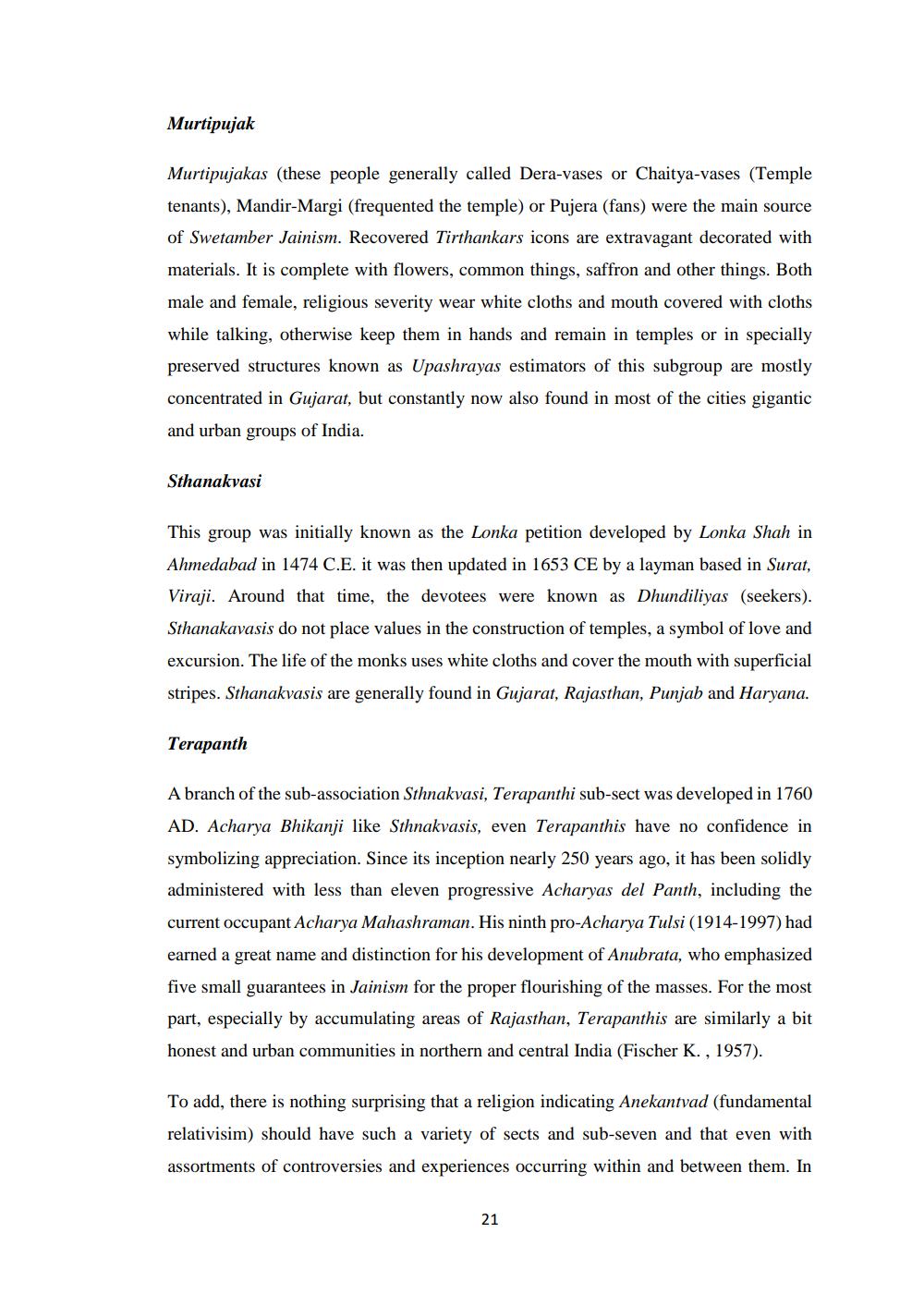________________
Murtipujak
Murtipujakas (these people generally called Dera-vases or Chaitya-vases (Temple tenants), Mandir-Margi (frequented the temple) or Pujera (fans) were the main source of Swetamber Jainism. Recovered Tirthankars icons are extravagant decorated with materials. It is complete with flowers, common things, saffron and other things. Both male and female, religious severity wear white cloths and mouth covered with cloths while talking, otherwise keep them in hands and remain in temples or in specially preserved structures known as Upashrayas estimators of this subgroup are mostly concentrated in Gujarat, but constantly now also found in most of the cities gigantic and urban groups of India.
Sthanakvasi
This group was initially known as the Lonka petition developed by Lonka Shah in Ahmedabad in 1474 C.E. it was then updated in 1653 CE by a layman based in Surat, Viraji. Around that time, the devotees were known as Dhundiliyas (seekers). Sthanakavasis do not place values in the construction of temples, a symbol of love and excursion. The life of the monks uses white cloths and cover the mouth with superficial stripes. Sthanakvasis are generally found in Gujarat, Rajasthan, Punjab and Haryana.
Terapanth
A branch of the sub-association Sthnakvasi, Terapanthi sub-sect was developed in 1760 AD. Acharya Bhikanji like Sthnakvasis, even Terapanthis have no confidence in symbolizing appreciation. Since its inception nearly 250 years ago, it has been solidly administered with less than eleven progressive Acharyas del Panth, including the current occupant Acharya Mahashraman. His ninth pro-Acharya Tulsi (1914-1997) had earned a great name and distinction for his development of Anubrata, who emphasized five small guarantees in Jainism for the proper flourishing of the masses. For the most part, especially by accumulating areas of Rajasthan, Terapanthis are similarly a bit honest and urban communities in northern and central India (Fischer K. , 1957).
To add, there is nothing surprising that a religion indicating Anekantvad (fundamental relativisim) should have such a variety of sects and sub-seven and that even with assortments of controversies and experiences occurring within and between them. In
21




